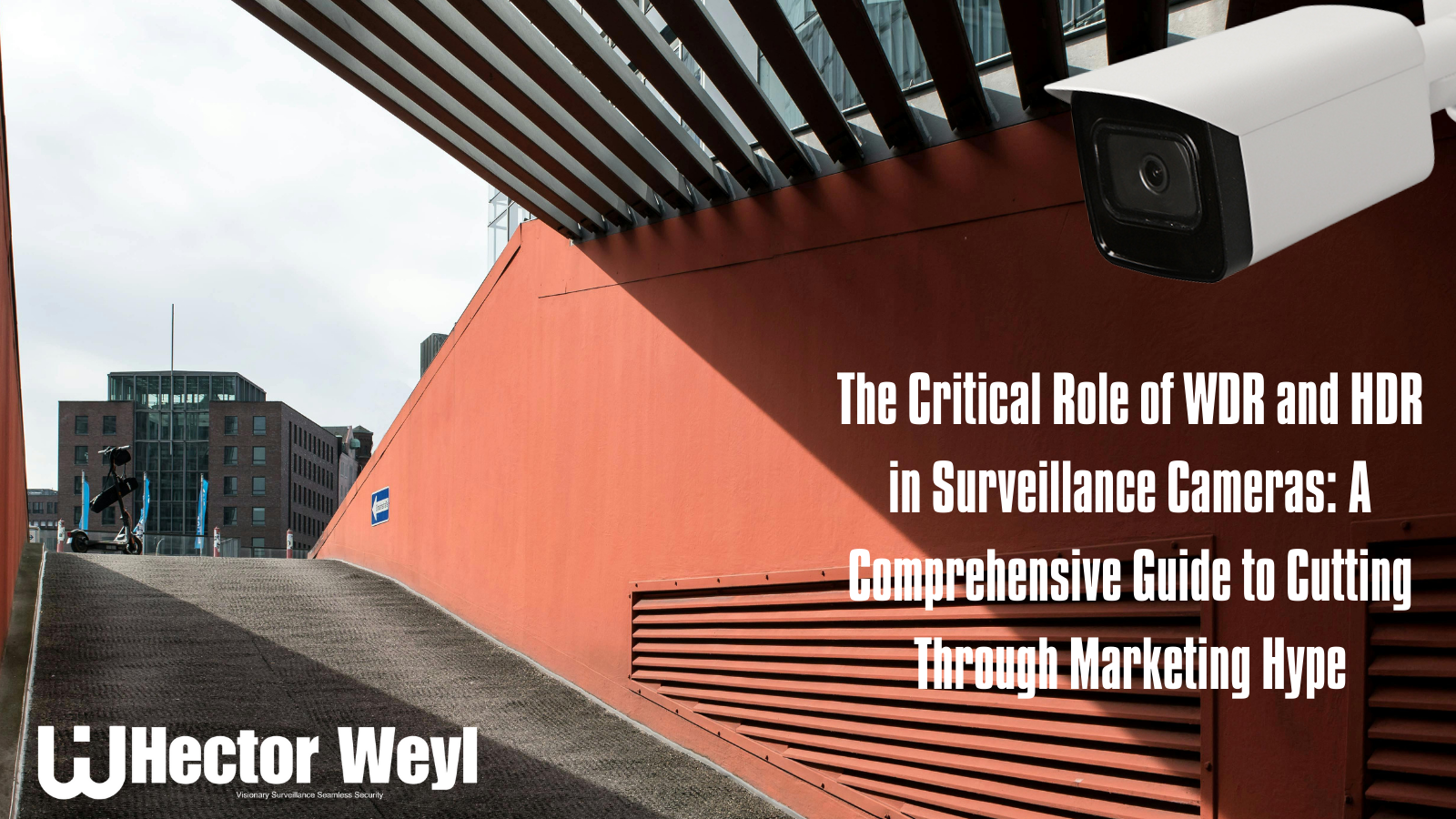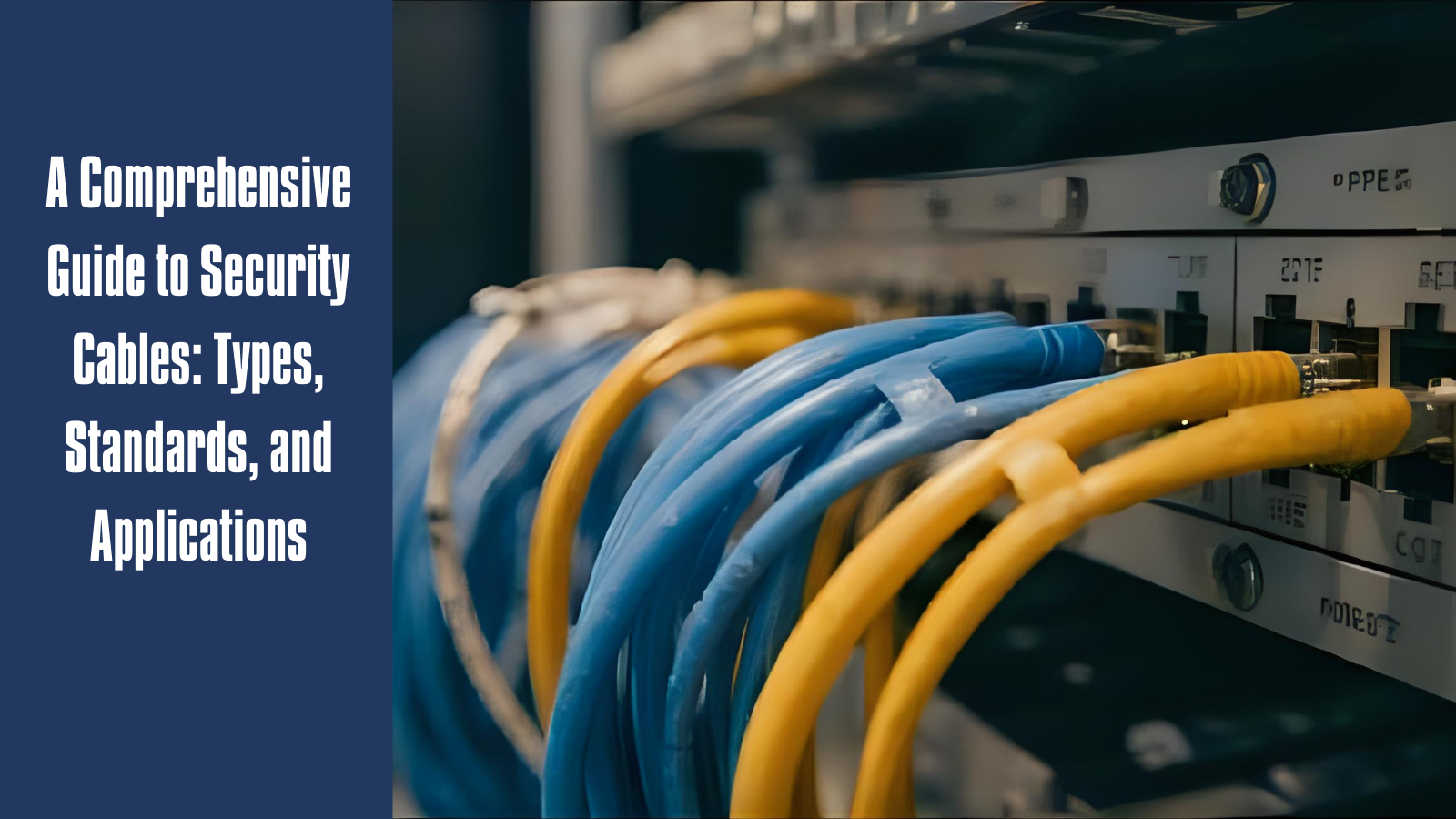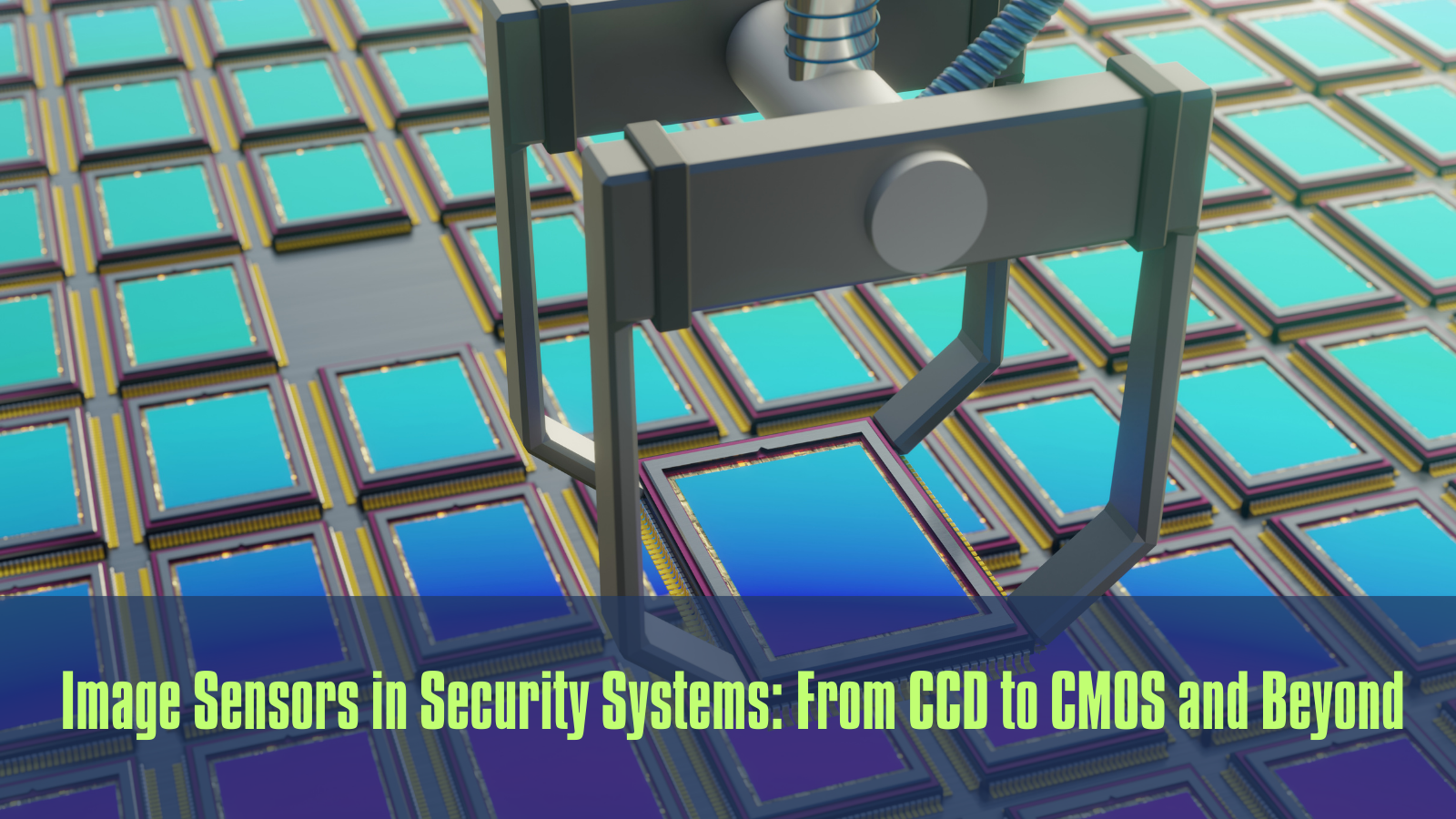The security and surveillance industry has undergone a monumental transformation over the past half-century—one that mirrors the shifting tides of global manufacturing, technological innovation, and economic power. In 1970, the global security market was a niche sector valued at less than
2billion,dominatedbyEuropeanfirmscateringtogovernmentandmilitaryclients.By2024,thatfigurehadsurgedtoover
500 billion, evolving into a technology-driven ecosystem where China now accounts for 45% of global production and 38% of R&D investment. What began as a regional industry rooted in European engineering has migrated across continents: from Europe to Japan in the 1980s, to Korea and Taiwan in the 1990s–2000s, and finally to China in the 2010s, becoming a cornerstone of smart cities, retail operations, and public safety worldwide.

For Hector Weyl, a Shenzhen-based innovator in security technology founded in 2010, this evolution is not just a historical arc but a daily reality. As a company that bridges component innovation and end-to-end solutions—with 400 employees (45% in R&D)—it embodies the modern era of security excellence, where hardware precision meets AI-driven intelligence. This article delves deep into the industry’s journey, unpacking the technical breakthroughs and market shifts that defined each regional era, highlighting the critical roles of chips, lenses, and solution providers, and showcasing how Hector Weyl is shaping the next chapter of global security.
1. The European Era: Pioneering Innovation and Setting Standards
1.1 The Birth of Modern Security Systems
Europe, particularly Germany and the United Kingdom, laid the groundwork for the modern security industry by turning theoretical surveillance concepts into commercial reality. In 1962, Bosch (Germany) launched the first mass-produced closed-circuit television (CCTV) system, the "Bosch VideoMonitor 100," designed for the German Federal Railways to monitor train stations and track switches. This analog system relied on bulky cathode-ray tube (CRT) monitors, coaxial cables for signal transmission, and magnetic tape recorders that stored just 4 hours of footage per tape. Around the same time, Philips (Netherlands) developed a compact CCTV camera for bank vaults, while the UK’s Rediffusion Electronics installed a 24-camera system in London’s King’s Cross Station in 1965—one of the first public-facing surveillance networks. These early systems were costly (a single Bosch camera cost
14,000 today) and limited to high-security sectors, but they established the basic framework for modern surveillance.

1.2 Technological Leadership
European firms excelled in three core areas that set global benchmarks:
- Optical Engineering: German optics giants like Carl Zeiss and Schneider Kreuznach developed high-precision lenses for CCTV cameras. Zeiss’s 1975 "Tessar 25mm" lens, for example, achieved a resolution of 500 TV lines (a measure of image detail) and a light sensitivity of 1 lux—far superior to competitors, making it ideal for low-light environments like parking garages.

- System Integration: Siemens pioneered centralized monitoring with its 1978 "Siemens SecuriControl" platform, which connected up to 64 cameras to a single control room, allowing operators to switch feeds and trigger alarms remotely. This eliminated the need for separate monitoring stations and became the standard for large facilities like airports.

- Standardization: European standards organizations like CENELEC (European Committee for Electrotechnical Standardization) established protocols to ensure interoperability. The 1983 EN 50155 standard, for instance, defined environmental requirements (temperature, vibration, humidity) for rail-mounted security equipment, ensuring systems worked reliably across Europe’s diverse climates.

1.3 Challenges and the Shift Eastward
Despite their technical lead, European companies faced insurmountable hurdles by the 1980s:
- High Production Costs: Labor costs in Germany and the UK were 3–5 times higher than in Japan. A Siemens CCTV camera required 12 hours of assembly by skilled workers, while Japanese firms used automated lines to cut production time to 3 hours.
- Limited Market Reach: Premium pricing (European systems cost 2–3 times more than Asian alternatives) restricted adoption to wealthy clients. In 1985, only 15% of global commercial buildings used CCTV—most of them in Europe and North America.
-
Emergence of Asian Competitors: Japan’s Sony and Panasonic began offering analog cameras with comparable quality at 40% lower prices. Sony’s 1984 "SSC-300" camera, for example, matched Zeiss’s lens resolution but sold for
1,800.
By 1988, Japan had captured 35% of the global CCTV market, and Europe’s share had dropped from 70% to 45%—marking the start of the industry’s eastward shift.
2. Japan’s Rise: Manufacturing Excellence and Technological Refinement
2.1 The Japanese Electronics Boom
Japan’s post-war economic miracle—driven by "kaizen" (continuous improvement) and government investment in electronics—transformed it into a global security powerhouse. Companies like Sony, Panasonic, and Canon leveraged their expertise in consumer electronics to redefine surveillance technology:
- Sony’s Image Sensors: In 1975, Sony introduced the first commercial charge-coupled device (CCD) sensor, the "ICX008," which replaced bulky phototubes with a compact chip that converted light into digital signals. By 1989, Sony’s CCD sensors achieved 1.3 megapixels (1,280x1,024 pixels)—a 10x improvement over analog imaging—and became the industry standard. In 2000, Sony launched the first CMOS sensor for security cameras, the "IMX014," which reduced power consumption by 60% compared to CCDs.

- Miniaturization: Panasonic’s 1982 "WV-BP100" camera was a breakthrough—it measured just 12x8x6 cm (half the size of European models) and weighed 300 grams, making it suitable for small spaces like retail stores and elevators. By 1987, 70% of global CCTV cameras were under 500 grams, thanks to Japanese design.

- Quality Control: Japan’s "total quality management" (TQM) systems set new benchmarks. Canon’s 1990 "VC-C1" camera had a failure rate of 0.5% per year—10 times lower than European competitors—due to rigorous testing (each camera underwent 1,000 hours of temperature cycling and vibration tests).
2.2 Integration of Advanced Features
Japanese companies were the first to add intelligent functionality to surveillance systems, turning passive cameras into active tools:
- Auto-Iris Lenses: Canon’s 1985 "EF-S 18-55mm" lens used a motorized iris to adjust light intake in real time, adapting to changes from bright sunlight (10,000 lux) to dim offices (1 lux) in 0.5 seconds. This eliminated the need for manual adjustments and improved image clarity in variable lighting.

- Digital Signal Processing (DSP): Toshiba’s 1988 "TMP87C800" DSP chip was integrated into Panasonic cameras to reduce noise (grainy images) and enhance contrast. The technology boosted image signal-to-noise ratio (SNR) by 20 dB, making it easier to identify faces in low light.
- Export-Oriented Strategies: Japan targeted fast-growing markets like Southeast Asia and North America. By 1995, Sony had 12 manufacturing plants worldwide, and Panasonic’s security division generated 60% of its revenue from exports. In the U.S., Japanese cameras captured 50% of the market by 1990.
2.3 Legacy and Ongoing Influence
Even as later regions took over manufacturing, Japan retained leadership in critical components:
- Image Sensors: Sony’s 2023 "IMX500" sensor (used in Hector Weyl’s smart cameras) integrates an AI processing unit that can analyze 4K video in real time—identifying objects like cars or people without relying on cloud servers. It has a 98% accuracy rate for facial recognition and is used in 60% of global smart traffic cameras.

- Optical Lenses: Fujifilm’s 2022 "HF35HA-1B" lens (a partner of Hector Weyl) has a maximum aperture of F1.4, allowing it to capture clear images in 0.1 lux (moonlight conditions)—a key feature for nighttime surveillance.
Japan’s legacy lies in refining technology for mass adoption: it turned CCTV from a niche tool into a mainstream product, laying the groundwork for the digital era.
3. Korea’s Entry: Technology Integration and Market Expansion
3.1 Semiconductor and Display Leadership
Korea’s rise in the 1990s–2000s was fueled by its dominance in semiconductors and displays—two components critical to digital surveillance. Giants like Samsung and LG leveraged their expertise to disrupt the industry:
- Memory and Storage: Samsung’s 1995 "K4S561632C" DRAM chip (128MB) enabled security systems to store 24 hours of high-resolution (720p) footage—up from just 4 hours with older memory. By 2005, Samsung controlled 30% of the global DRAM market, ensuring security firms had reliable access to storage. LG’s 2000 "22LD350" LCD monitor (22 inches, 1600x1200 resolution) replaced CRT monitors in control rooms, offering 10x better contrast (1000:1 vs. 100:1) and lower power consumption.
-
System-on-Chip (SoC) Designs: Samsung’s 2005 "S5P4418" SoC was a game-changer—it integrated a video encoder, decoder, and processor into a single chip, supporting the H.264 video standard (which compressed file sizes by 50% compared to H.263). This made high-definition (HD) surveillance affordable; a Samsung HD camera cost
1,000 in 2005.
3.2 Focus on Connectivity and IoT
Korea’s leadership in telecommunications (it launched the world’s first 3G network in 2002) enabled the shift from analog to connected security systems:
- IP Cameras: Samsung’s 2008 "SNV-6012" was one of the first IP cameras to support Power over Ethernet (PoE), which transmitted both data and power over a single cable. This eliminated the need for separate power supplies, cutting installation costs by 30%. By 2010, 40% of global security cameras were IP-based—up from 5% in 2005—with Samsung capturing 22% of that market.

- Smart Home Integration: LG’s 2010 "HomeChat" system linked security cameras to smart appliances. For example, if a camera detected an intruder, it would automatically turn on lights, lock doors, and send an alert to the user’s phone. This merged security into broader IoT ecosystems, expanding its appeal to consumers.

3.3 Global Market Penetration
Korean brands gained traction by balancing features and price. Unlike European firms (premium) or early Chinese firms (low-cost), Korea targeted the "mid-range premium" segment:
- Professional Segments: Samsung’s 2015 "QNO-6010R" IP camera offered 4K resolution and AI-based motion detection at $500—half the price of Sony’s equivalent. It captured 25% of the global professional IP camera market that year.
- Consumer Segments: LG’s 2018 "SmartThinQ" camera sold for $150, offering HD video and smartphone connectivity, making it popular with homeowners. By 2020, Korea held 18% of the global security market—second only to China.
4. Taiwan’s Role: The Silent Enabler of Global Security
4.1 Semiconductor Foundries and Component Manufacturing
Taiwan’s strength lay in its position as a "behind-the-scenes" enabler—providing the chips and components that power other companies’ products. Two firms stood out:
- TSMC (Taiwan Semiconductor Manufacturing Company): As the world’s largest semiconductor foundry, TSMC manufactured chips for nearly every major security firm. Its 2012 28nm process node was a turning point: it produced HiSilicon’s (Huawei) Hi3516 chip, which reduced power consumption by 30% and boosted performance by 40% compared to 40nm chips. By 2020, TSMC made 70% of the world’s security SoCs, including chips for Ambarella (US) and Sony.
- MediaTek: MediaTek’s 2014 "MT8173" SoC was a hit with mid-tier security firms. It supported 4K video processing and cost $25—25% less than Samsung’s equivalent—making HD cameras accessible to small businesses. By 2018, MediaTek controlled 35% of the global mid-range security SoC market.
4.2 OEM and ODM Dominance
Taiwanese companies specialized in original equipment manufacturing (OEM) and original design manufacturing (ODM)—producing products for global brands under their labels:
- Flexibility: Firms like Foxconn and Compal could adapt to client needs quickly. For example, Foxconn produced Hikvision’s first DVR (digital video recorder) in 2005, ramping up from 10,000 units/month to 50,000 units/month in 6 months. Its lead time was 7 days—half that of European manufacturers.
- Supply Chain Integration: Taiwan’s proximity to China (a major source of components like capacitors and resistors) allowed seamless logistics. A Taiwanese ODM could source parts from Shenzhen, assemble in Taoyuan, and ship to Europe in 2 weeks—faster than any other region. By 2015, 60% of global security cameras were assembled by Taiwanese ODMs, even if they bore European or American brands.
4.3 Innovation in Components
Taiwanese firms also excelled in specialized components that improved camera performance:
- Lens Manufacturing: Largan Precision’s 2016 "12mm security lens had a distortion rate of less than 1% and a light transmittance of 92%—critical for clear images. It was used in 40% of premium security cameras, including models from Sony and Bosch.
- Embedded Systems: Advantech’s 2018 "UNO-2484G" embedded industrial computer was designed for outdoor security devices. It could operate in temperatures from -40℃ to 70℃ and resist dust and water (IP67 rating), making it ideal for traffic cameras and border surveillance.
5. China’s Ascent: The New Global Hub of Security Innovation
5.1 Manufacturing Scale and Efficiency
China’s rise as the "world’s factory" was not just about size—it was about building a complete, efficient supply chain that redefined cost and speed:
-
Economies of Scale: By 2020, Shenzhen alone had over 3,000 security firms, producing 68% of the world’s surveillance cameras. Hikvision’s hangzhou factory could manufacture 1 million cameras/month—more than the entire output of Europe’s top 10 firms combined. This scale reduced costs: a basic IP camera that sold for
50 by 2020.
- Supply Chain Clustering: Shenzhen’s "Huaqiangbei Electronics Market" (the world’s largest electronics market) put every component—from chips to lenses—within a 10-kilometer radius. A small firm could source parts in a day and assemble a camera in 2 hours, compared to 2 weeks in Europe.
- Government Support: China’s "13th Five-Year Plan" (2016–2020) allocated 200 billion yuan ($28 billion) in R&D subsidies for security technology, with a focus on AI and smart cities. Cities like Hangzhou and Guangzhou invested in "safe city" projects, installing millions of cameras and creating a massive domestic market for Chinese firms.
5.2 From Imitators to Innovators
In the 2000s, Chinese firms like Hikvision and Dahua started as ODMs for foreign brands. By the 2010s, they had become global innovators:
- Investment in R&D: Hikvision spent 9.9 billion yuan ($1.4 billion) on R&D in 2022—10% of its revenue—and employed 25,000 engineers. Its 2023 "A20" AI chip has a computing power of 12 TOPS (trillions of operations per second), supporting 8 channels of 4K video analysis. Huawei’s HiSilicon division developed the "Hi3559A" chip, which uses H.265 encoding to compress video files by 50% compared to H.264.
- Global Acquisitions: To gain technology and market access, Chinese firms acquired foreign brands. In 2016, Huawei bought Neul (UK), a leader in low-power LPWAN technology, to enhance its smart city connectivity. In 2018, Dahua acquired TVT (China), a specialist in thermal imaging, expanding its product range.
- Standard-Setting: China now influences international standards. The "GB/T 28181" standard (2016), which defines how security devices connect to each other, has been adopted by 20 countries, including Brazil and Indonesia. Chinese firms also hold 42% of global patents in AI surveillance—more than the U.S. (35%) and Europe (15%) combined.
5.3 Dominance in Every Segment
By 2023, China led the global security industry in every key category:
- Video Cameras: China produced 68% of the world’s surveillance cameras, with Hikvision and Dahua capturing 45% of the global market (Hikvision: 28%, Dahua: 17%).
- AI and Analytics: Chinese firms like 商汤科技 (SenseTime) and 旷视科技 (Megvii) developed facial recognition algorithms with a (false recognition rate) of less than 1 in 1 million—used by police forces worldwide to solve crimes. In China’s "Skynet" system, these algorithms have helped reduce theft by 30% in major cities.

- Cloud and IoT Platforms: Hikvision’s "HikCentral" platform connects 100 million devices globally, integrating cameras, access control, and fire alarms into smart city ecosystems. Huawei’s "CloudCampus" solution links security cameras to 5G networks, enabling real-time traffic management in cities like Shenzhen.
6. Deep Dive into Critical Industrial Chain Nodes
6.1 Chips: The Brains of Security Systems
Semiconductors are the foundation of modern security—without them, AI analytics and high-definition video would be impossible. Key players include:
- HiSilicon (China): Huawei’s subsidiary produces the "Hi3559A" SoC, which supports 8K video encoding and AI tasks like facial recognition. It is used in 30% of global high-end security cameras, including Hector Weyl’s "Smart Eye X1" model.
- Ambarella (US): Ambarella’s "A12" chip is designed for traffic surveillance, processing 200 megapixels/second and supporting real-time license plate recognition (LPR) with 99% accuracy. It powers cameras used on highways in the U.S. and Europe.
- Sony (Japan): Sony’s "IMX500" sensor (mentioned earlier) integrates an AI processor, allowing cameras to analyze footage locally—reducing reliance on cloud servers and cutting latency to 0.1 seconds.
- Texas Instruments (US): TI’s "TMS320C64x" DSP chip is used in entry-level cameras to enhance image quality, reducing noise and improving color accuracy in low light.
Hector Weyl’s Role: Hector Weyl collaborates with TSMC to develop custom AI chips for edge computing. Its 2023 "HW-AI100" chip, built on TSMC’s 7nm process, has a Computer Power of 20 TOPS and consumes just 5W—30% less power than comparable chips. It is optimized for retail analytics, counting customers and tracking their movement with 95% accuracy, and is used in Hector Weyl’s "RetailGuard" system deployed in 500+ stores across Asia.
6.2 Lenses: The Eyes of Surveillance
Lenses determine image clarity, field of view, and low-light performance—critical for reliable surveillance. Major manufacturers include:
- Fujifilm (Japan): Fujifilm’s "HF35HA-1B" lens (35mm focal length, F1.4 aperture) captures clear images in 0.1 lux, making it ideal for nighttime parking lot surveillance. It is used in Hector Weyl’s "NightVision N20" camera.
- Computar (Japan): Computar’s "TG4Z3513AFCS" varifocal lens (3.5–13mm) allows operators to adjust the field of view from wide-angle (180 degrees) to telephoto (30 degrees), suitable for large spaces like airports.
- Sunny Optical (China): Sunny’s "180-degree fisheye lens has a distortion rate of 15%—lower than competitors—and is used in elevator cameras, where full coverage is essential. It costs 20% less than Japanese alternatives.
- Largan Precision (Taiwan): Largan’s "50mm telephoto lens can (identify) license plates from 80 meters away with 99% accuracy, used in highway toll booths.
Hector Weyl’s Role: Hector Weyl designs custom lenses with partners like Sunny Optical and Largan. For its "ParkingGuard P30" system (used in 200+ parking lots in China), Hector Weyl developed a 50mm lens with auto-focus and anti-glare coating, reducing reflections from car headlights and improving license plate recognition accuracy to 99.2%—up from 95% with off-the-shelf lenses.
6.3 Solutions: Integrating Hardware and Software
Solution providers turn hardware (cameras, chips, lenses) into actionable tools by combining them with software and services. Examples include:
- Hikvision’s HikCentral: A unified platform that connects 100,000+ cameras, access control systems, and alarms. It is used in Beijing’s "Safe City" project, monitoring 2 million cameras and alerting police to incidents like fights or accidents in 10 seconds.
- Dahua’s DSS (Digital Surveillance System): A scalable platform for large enterprises, supporting 50,000+ devices. It is used by Walmart China to monitor 400+ stores, tracking inventory levels and detecting shoplifting.
- Hector Weyl’s HVMS (Hector Weyl Video Management System): A cloud-edge hybrid platform that integrates AI analytics, cloud storage, and mobile access. Key features include:
- AI Anomaly Detection: Identifies unusual behavior (e.g., someone climbing a fence, a child wandering alone) with a 0.3-second response time and 5% false alarm rate—used in schools and shopping malls.
- Cloud-Edge Synergy: Cameras process data locally (e.g., counting people) and send only critical alerts to the cloud, reducing storage costs by 40%.
- Industry Customization: For ports, HVMS integrates with radar to track ships and identify unauthorized vessels; for retail, it analyzes customer demographics (age, gender) to optimize product placement.
Hector Weyl’s Role: Hector Weyl focuses on vertical markets, tailoring solutions to specific industries. For Southeast Asia’s ports (e.g., Singapore’s Jurong Port), it developed a system that withstands high temperature and humidity) (45℃, 90% humidity) and uses AI to recognize ship logos and track cargo—reducing manual inspection time by 60%. For retail clients like Indonesia’s Alfamart, HVMS analyzes customer dwell time and purchase patterns, helping stores increase sales by 15%.
7. Hector Weyl: A Chinese Innovator Shaping the Future
7.1 Company Overview
Founded in 2010 in Shenzhen, Hector Weyl started as a small ODM producing basic IP cameras. Today, it is a global player with 5 overseas branches (US, Germany, Singapore, India, Brazil), 400 employees (45% in R&D). It specializes in AI-driven security solutions for retail, transportation, and smart cities, with 80% of its revenue coming from overseas markets—making it one of China’s fastest-growing security exporters.
7.2 Core Competencies
Hector Weyl’s strength lies in bridging hardware innovation and software intelligence:
- AI and Machine Learning: Its in-house team of 200 AI engineers has developed proprietary algorithms for:
- Facial Recognition: 99.5% accuracy across different ethnicities and lighting conditions, used in airport immigration checks (e.g., India’s Delhi Airport).
- Object Detection: Identifies 20+ objects (cars, bikes, backpacks) in real time, used in traffic management (e.g., Jakarta’s busy Sudirman Street).
- Anomaly Detection: Recognizes 15+ unusual behaviors (falling, running, breaking glass), used in nursing homes to monitor elderly residents.
- Edge Computing: Hector Weyl’s "EdgeBox HW100" device (size of a textbook) processes 4 channels of 4K video locally, with 1TB of storage. It is deployed in remote areas like Nepal’s mountain villages, where cloud connectivity is poor, reducing reliance on internet access.
- Cloud Integration: In partnership with Alibaba Cloud, Hector Weyl offers "HVMS Cloud," a scalable service that stores footage and generates analytics reports. For small businesses, it costs just $10/month per camera—affordable for mom-and-pop stores.
- Customization: Hector Weyl’s "Solution-as-a-Service" model lets clients tailor systems to their needs. For example, it designed a solar-powered camera for Kenya’s rural schools (where electricity is scarce) that runs on sunlight for 30 days and sends alerts via SMS (since internet is limited).
8. The Future of the Security Industry
8.1 Emerging Trends
The security industry is poised for rapid change, driven by three key trends:
- 5G and Beyond: 5G’s 1Gbps upload speed enables real-time 4K/8K video streaming and AI analytics. In 2024, Hector Weyl launched a "5G+AI Camera" for large events (e.g., the 2024 Paris Olympics) that can track 100+ people simultaneously and alert security to overcrowding in 1 second. By 2027, 60% of global security cameras will be 5G-enabled.
- Edge AI: Moving processing to devices (instead of the cloud) reduces latency and protects privacy. Hector Weyl’s 2024 "EdgeAI Camera" integrates its HW-AI100 chip, allowing local facial recognition without sending data to the cloud—critical for regions with strict data privacy laws (e.g., EU’s GDPR).
- Ethical AI and Sustainability: As surveillance expands, ethical concerns grow. Hector Weyl has developed an "AI Ethics Dashboard" that audits algorithms for bias (e.g., ensuring facial recognition works equally well for dark and light skin tones) and transparency (showing how decisions are made). On sustainability, its 2024 "EcoCam" uses 30% less power than previous models and is made from 50% recycled plastic—sales reached 100,000 units in its first year.
8.2 Challenges
Despite growth, the industry faces significant hurdles:
- Geopolitical Tensions: U.S. sanctions on Chinese firms (e.g., Hikvision, Dahua) have restricted access to American chips and markets. In 2022, Hikvision’s U.S. revenue dropped 35%, forcing firms to shift to Southeast Asia (Hector Weyl’s Southeast Asia revenue grew 20% in 2023).
- Cybersecurity: Hackers target security cameras to steal data or disable systems. In 2023, a global attack on IP cameras affected 1.2 million devices, leaking footage from homes and businesses. Hector Weyl’s "SecureLink" technology uses end-to-end encryption and regular firmware updates to prevent breaches—its clients have not reported a single hack since 2021.
- Regulation: Data privacy laws vary globally. The EU’s GDPR requires firms to store data locally, so Hector Weyl built a data center in Frankfurt in 2023 to serve European clients. In China, the "Personal Information Protection Law" (2021) restricts facial recognition use, pushing firms to develop alternative technologies (e.g., behavioral analytics).
8.3 Hector Weyl’s Vision
Hector Weyl aims to lead the industry’s next era by focusing on three goals:
- Innovation Leadership: It plans to invest 20% of revenue in R&D by 2025, with a focus on quantum encryption (to protect data from future hacks) and 6G-enabled cameras (for faster connectivity).
- Global Expansion: It will enter 10 new markets (e.g., Nigeria, Mexico) by 2026, partnering with local firms to adapt solutions to regional needs (e.g., solar cameras for Africa, waterproof cameras for Latin America’s rainy seasons).
- Ethical Leadership: It launched the "Global Security AI Ethics Alliance" in 2024, bringing together 50+ firms (including Sony and Samsung) to set industry standards for responsible AI use. It also publishes an annual "Ethics Report" detailing its progress in reducing bias and protecting privacy.
Conclusion: A Journey of Innovation and Transformation
The security and surveillance industry’s migration from Europe to China is more than a shift in manufacturing—it is a story of how technology evolves to meet global needs. Europe pioneered the basics, Japan refined manufacturing, Korea integrated connectivity, Taiwan enabled components, and China turned it all into accessible, intelligent solutions. Each region built on the last, creating an industry that now touches every aspect of modern life—from keeping cities safe to helping small businesses thrive.
Today, China stands as the undisputed leader, driven by firms like Hector Weyl that blend scale with innovation. By focusing on AI, edge computing, and ethical technology, Hector Weyl is not just adapting to the future—it is shaping it. As the industry continues to evolve, one thing is clear: security will no longer be just about watching—it will be about understanding, predicting, and creating a safer, smarter world for everyone.

























Share:
Beyond the Hype: A Technical Deep Dive into True Wide Dynamic Range (WDR) by Hector Weyl
Secure and Reliable Video Storage Solutions for Modern Surveillance Systems